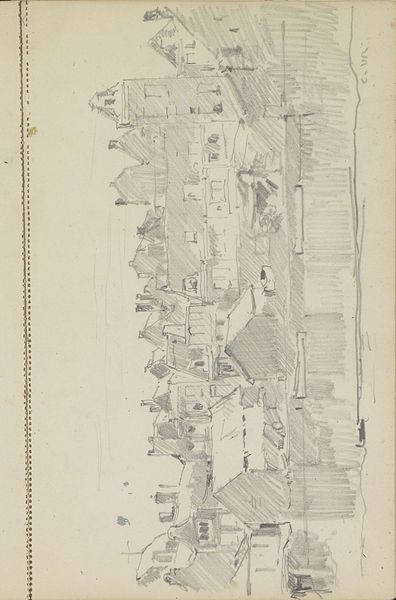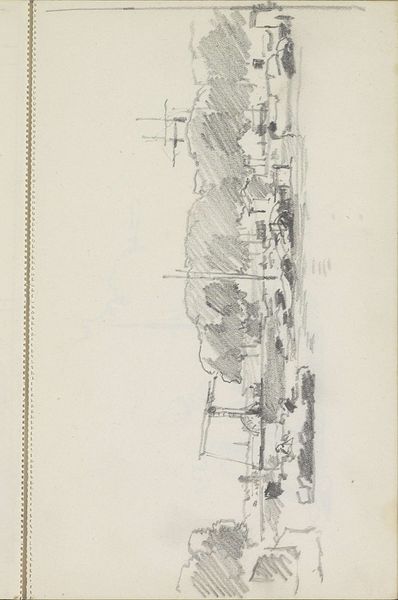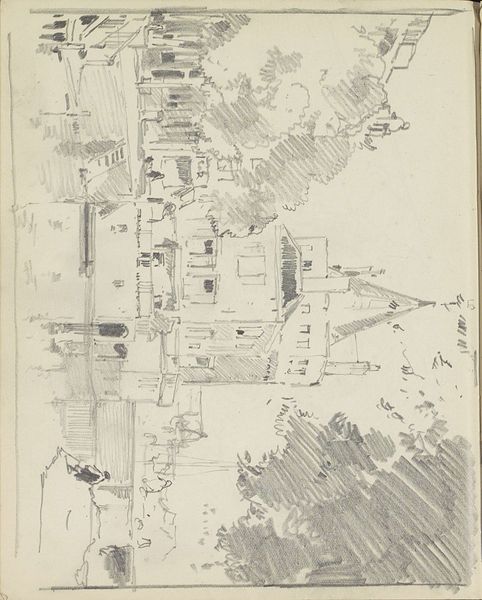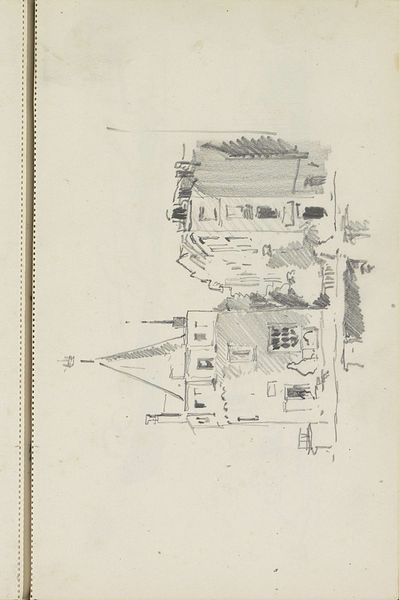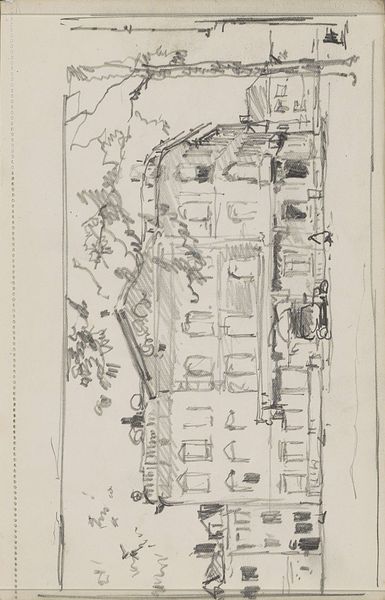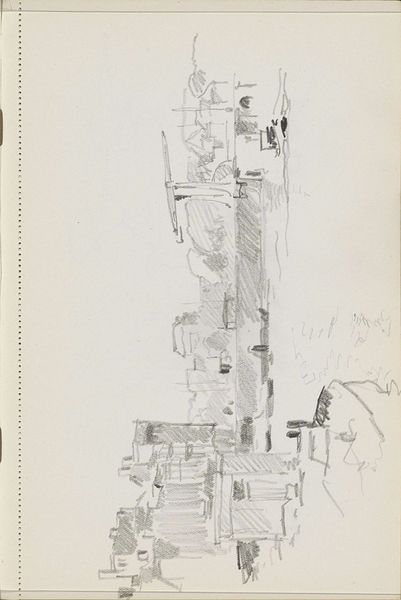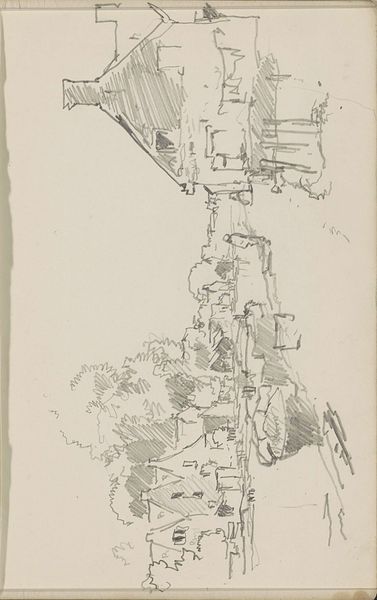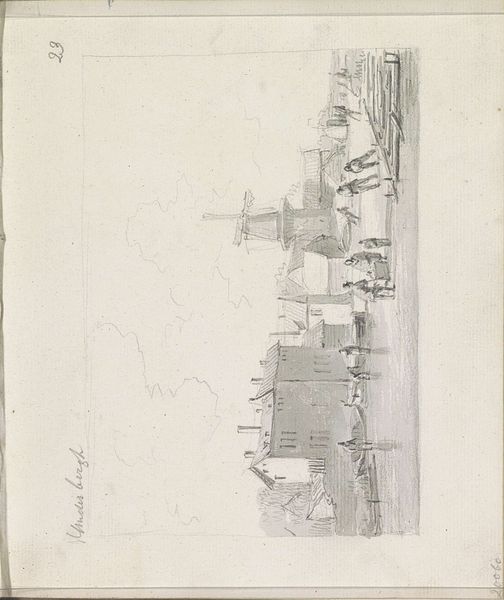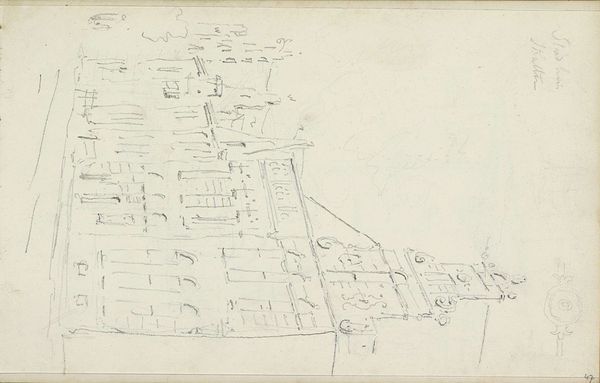
Twee figuren voor een boerderij aan een waterkant 1890 - 1946
0:00
0:00
cornelisvreedenburgh
Rijksmuseum
drawing, pencil
#
drawing
#
pen sketch
#
sketch book
#
landscape
#
personal sketchbook
#
idea generation sketch
#
sketchwork
#
pen-ink sketch
#
pencil
#
pen work
#
sketchbook drawing
#
cityscape
#
storyboard and sketchbook work
#
sketchbook art
Copyright: Rijks Museum: Open Domain
Curator: It’s amazing how a simple sketch can tell such a complex story about labor. Editor: Exactly! This piece is entitled "Two Figures in front of a Farmhouse on a Water’s Edge," sketched by Cornelis Vreedenburgh sometime between 1890 and 1946. It's currently held at the Rijksmuseum, created with pen and pencil on paper. I love the looseness of the sketch, but I'm curious: what elements stand out to you? Curator: I see the clear strokes that define the architecture versus the looser renderings of figures and nature as a window into artistic labor. The materials are quite humble—pencil and paper—things readily available, and speak to the accessibility of art-making. But how might this inform our understanding of artistic value, compared to, say, an oil painting of a similar subject? Editor: That’s a good point. It challenges the conventional view of art as solely residing in finished, polished works. The sketch reveals the raw process, the artist's hand at work. Are you saying it blurs the lines between 'high art' and craft, and asks us to re-evaluate artistic value beyond just the final product? Curator: Precisely. Think about the labor involved – the artist’s time, the acquisition of the materials. Was this intended for sale? Display? Or simply an exercise, a moment of observation? These questions influence how we understand the work's position in the art market. What is the purpose of its production and its accessibility for its intended public? Editor: I see what you mean! I initially saw it as a simple landscape sketch, but your perspective encourages me to consider it as a record of artistic labor and a comment on material value within the art world itself. It is, after all, a product of someone’s mind and effort, visualized through commonplace resources. Curator: And in understanding that process, we challenge what society deems as valuable and artistic, right? Editor: Absolutely, it’s been fascinating looking at this sketch from a more materialist viewpoint, it changes my perception entirely. Thank you.
Comments
No comments
Be the first to comment and join the conversation on the ultimate creative platform.

